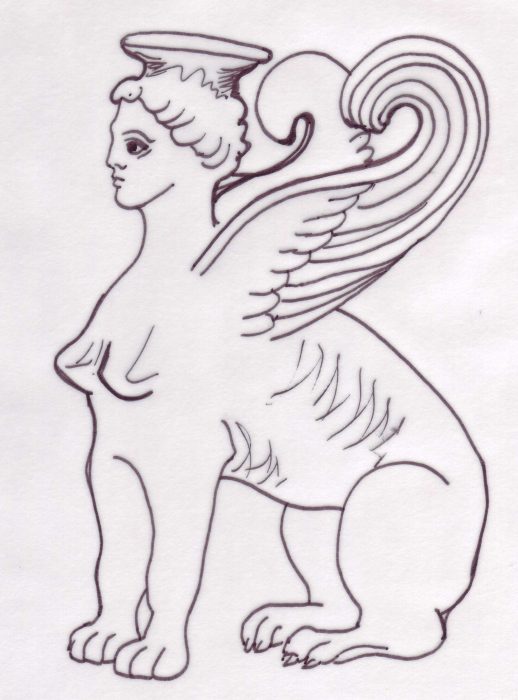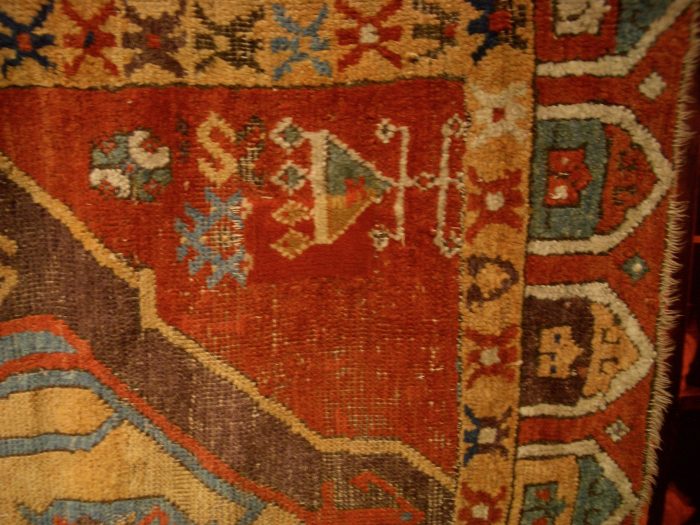Freud’s Sphinx
This painting of a sphinx is one of my twelve smaller gilded paintings which together form Significantly Freud: Icons for a Jewish Atheist, representing my favourite twelve artefacts from the private collection of Sigmund Freud.
A sphinx plays a key role in the myth of Oedipus Rex, dramatised in a play by Sophocles in 429 BC. An oracle declares that Oedipus will murder his father, King Laius, and marry his mother, Queen Jocasta. all from the city of Thebes. Can Oedipus escape his predicted fate by being removed from his mother and father as a young baby? As fate would have it, Oedipus, now a King of Corinth, does eventually murder his father. He also solves the riddle of the Sphinx, who is terrorising the people of Thebes and as a reward he marries Jocasta, his mother. Freud made this Oedipus myth central to his theory. He believed sons, for example, were in love with their mother and jealous of their father.

Das Schicksal (Fate)
The painted red script, Das Schicksal translates as “Fate”. This signifies the dilemma we all face – are we in control of our own destiny or do the forces of fate combine to lead us where they want us to go?

Freud’s sphinx is a 210 mm high terracotta Greek statue from the late 5th century BC. The sphinx wears the crown of a divine goddess, has the back legs of a lion and the wings of an eagle. In Greece sphinxes were associated with death and funerary monuments. Freud also had a painting of the Great Sphinx of Giza in his consulting room.

One of my original sketches for this painting.
Jonathan Jones (The Guardian 9 May 2006) writes “The most famous proposition of psychoanalysis is rooted in Greek drama: in Freud’s study you can see his reproduction of Ingres’s painting Oedipus and the Sphinx, a fitting memento of Freud’s notion of the Oedipus complex. Ingres’s painting depicts Oedipus after he has inadvertently killed his father, trying to answer the riddle of the Sphinx. Freud said that all human curiosity begins with “the riddle of the Sphinx – that is the question of where babies come from”. Freud did not merely like art, he loved it; and however much he is discredited we will come back to his writings because they illuminate it and are based on a deep understanding of it. ”

The colour of the frame and desktop in this painting was inspired by the beautiful red colour in the geometric design of the tribal rug hanging on the wall behind Freud’s consulting couch.